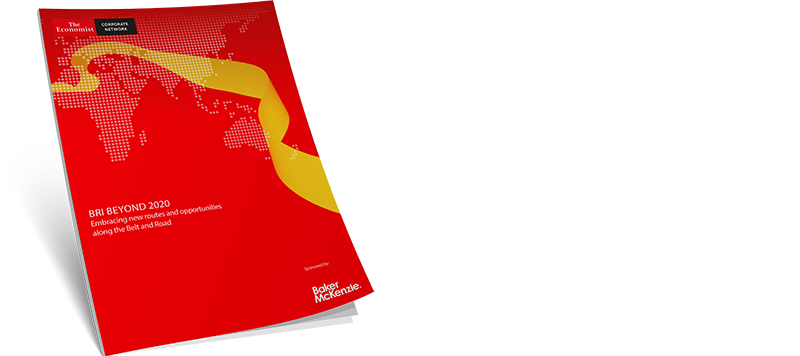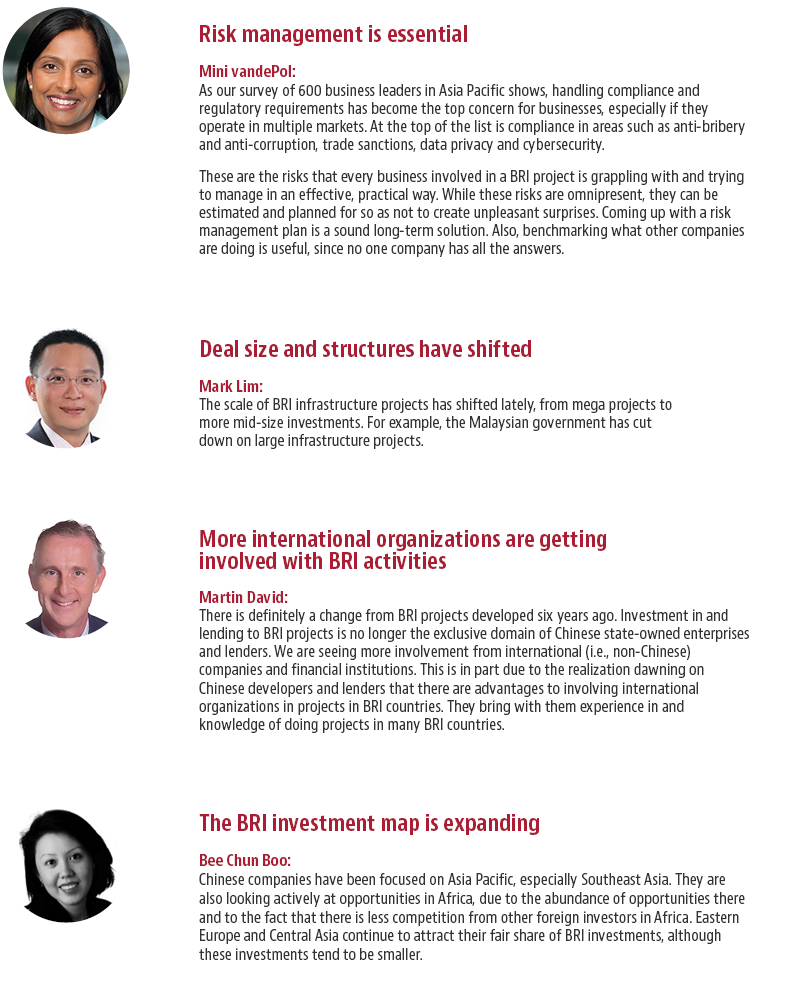7 December, 2019
Insights from the latest BRI development
The importance of BRI on emerging markets in the decade to come cannot be overstated. Core BRI countries account for nearly 50% of the world's population and 30% of the global economy as measured by GDP. Moreover, with more than 130 countries now reported to have signed BRI agreements, the traditional Silk Road has now expanded to encompass countries from Central America to the South Pacific.
In this report from the Economist Corporate Network, supported by Baker McKenzie, learn more about how China is taking steps to reboot its approach to BRI projects in hopes of increasing international participation and encouraging a multilateral approach that is more inclusive, sustainable and transparent.
- BRI activities are evolving towards a multilateral approach that invites international participation.
- New opportunities are emerging as BRI has evolved beyond the initial focus on infrastructure to encompass other projects (for example, extending to a digital silk road).
- While the opportunities for investment remain attractive, managing risk along the BRI is absolutely critical for projects to be successful. BRI participants must understand a project’s full risk profile over its life cycle and find ways to manage these risks down in a systematic way.
- Government policies will play a crucial role in advancing future BRI developments and future investments will depend on companies' ability to assess both risks and benefits related to regulators as well as local and national governments.
What do our partners have to say?
For further information, please contact:
Ai Ai Wong Partner, Baker & McKenzie
aiai.wong@bakermckenzie.com








